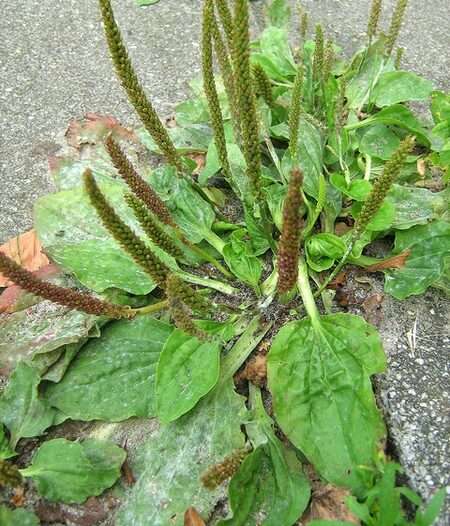
Description
Plantago major, sometimes known as Plantain, is a perennial herbaceous species that blooms. Seek for leaves with a circular rosette design that are smooth and ribbed. At this time of year, a seed head that resembles a green ear of corn or a cattail may be emerging from the center of the plant. There is a wide range of leaf sizes available, ranging from two to twelve inches.
Habitat
Although the plant has extensively naturalized elsewhere in the world, it is native to most of Europe and northern and central Asia. Plantago major thrives in fields and lawns, beside roads, and in other places where people have tampered with nature. It performs best in soils that have been disturbed or compacted.
Uses
Additionally, plantain leaves have the potential to reduce intestinal motility, which could help treat diarrhea and encourage regular bowel movements. According to some research, plantain weed may promote wound healing by lowering pain, preventing microbial development, and reducing inflammation. Flavonoids, terpenoids, glycosides, and tannins are a few of the anti-inflammatory substances found in leaves.

Varieties
Planttago major subsp. major, P. major subsp. intermedia, and P. major subsp. winteri are the three difficult-to-distinguish regional subspecies of this plant. Additionally, there are two closely related species that have comparable cultural requirements and culinary applications: P. lanceolata, or ribwort plantain, and P. rugelii, or Rugel’s plantain.
Additionally, two P. major cultivars have been produced as ornamentals. ‘Variegata’ has variegated leaves, but ‘Rubrifolia’ has purple leaves.
Plant Care
- Light
Although it grows best in full sun, broadleaf plantains can also thrive in partial shade.
- Soil
Broadleaf plantains are known for being weeds, yet they actually grow in almost any type of soil. Although it may survive in compacted, dense soil, rich, loamy soil with enough drainage is ideal for it to develop to its maximum size.
- Water
Rainfall alone is sufficient as supplementary irrigation in all but the driest areas. Approximately one inch of water each week—from irrigation, rainfall, or both—will be beneficial for ornamental types.
- Temperature and Humidity
Throughout much of its hardiness range, which includes zones 3 through 12, the broadleaf plantain grows best in the hot, muggy summer months. Although it grows best in rather humid environments, it may also thrive in drier ones with additional water. It is a somewhat less common lawn weed west of the Rockies, although it is still commonly seen.
- Fertilizer
Broadleaf plantains don’t require feeding. In general, it thrives without fertilizer.
Table





